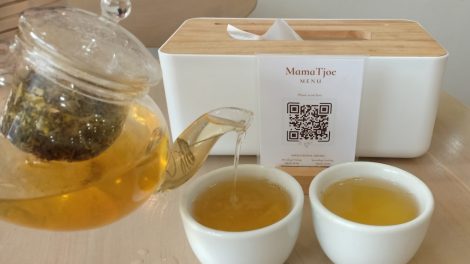As I delve into the world of Taoist breathing techniques, I find myself captivated by the profound simplicity and depth of this ancient practice. Rooted in the philosophical and spiritual traditions of Taoism, these techniques offer a pathway to harmonize the body, mind, and spirit. The essence of Taoist breathing lies in its ability to connect us with the natural rhythms of life, allowing us to cultivate inner peace and vitality.
In a world that often feels chaotic and overwhelming, I have discovered that these breathing techniques serve as a refuge, providing me with tools to navigate the complexities of modern existence. Taoist breathing is not merely about inhaling and exhaling; it is an art form that encourages mindfulness and awareness. Each breath becomes a conscious act, a moment to reconnect with my inner self and the universe around me.
As I explore these techniques, I am reminded of the importance of breath as a bridge between the physical and spiritual realms. Through this article, I aim to share my insights into the principles, benefits, and practices of Taoist breathing, inviting others to embark on their own journey toward tranquility and self-discovery.
Key Takeaways
- Taoist breathing techniques focus on deep, slow, and natural breathing to promote relaxation and vitality.
- Understanding the principles of Taoist breathing involves harmonizing the body, mind, and breath to achieve balance and well-being.
- Taoist breathing can provide stress relief by calming the nervous system, reducing anxiety, and promoting mental clarity.
- A step-by-step guide to Taoist breathing techniques includes abdominal breathing, reverse breathing, and rhythmic breathing exercises.
- Incorporating Taoist breathing into daily life can be done through mindfulness, meditation, and integrating breathing practices into daily activities.
Understanding the Principles of Taoist Breathing
At the heart of Taoist breathing techniques lies a set of principles that guide practitioners toward achieving balance and harmony. One fundamental aspect is the concept of “Qi,” or life force energy, which flows through all living beings. I have come to understand that by harnessing this energy through breath, I can enhance my physical health and emotional well-being.
The practice emphasizes the importance of deep, diaphragmatic breathing, which allows for a greater intake of oxygen and promotes relaxation. This principle resonates with me as I realize how often I have taken shallow breaths, inadvertently contributing to stress and tension. Another key principle is the idea of mindfulness.
In Taoist breathing, I am encouraged to be fully present in each moment, focusing on the sensations of my breath as it enters and leaves my body. This practice cultivates a heightened awareness that extends beyond breathing; it permeates my daily life, allowing me to approach challenges with a calm and centered mindset. By integrating mindfulness into my breathing practice, I find that I can better manage my thoughts and emotions, creating a sense of clarity that enhances my overall quality of life.
The Benefits of Taoist Breathing for Stress Relief

The benefits of Taoist breathing techniques for stress relief are profound and far-reaching. As I engage in these practices, I notice a significant reduction in my anxiety levels. The deep, rhythmic breaths help activate the parasympathetic nervous system, which counteracts the body’s stress response.
This physiological shift allows me to experience a sense of calm that permeates my entire being. In moments of overwhelming stress, I have found solace in returning to my breath, using it as an anchor to ground myself in the present. Moreover, Taoist breathing fosters emotional resilience.
By cultivating a deeper connection with my breath, I become more attuned to my emotions and thoughts. This awareness enables me to respond to stressors with greater equanimity rather than reacting impulsively. I have learned to observe my feelings without judgment, allowing them to flow through me like clouds passing in the sky.
This practice not only alleviates stress but also empowers me to navigate life’s challenges with grace and composure.
Step-by-Step Guide to Taoist Breathing Techniques
Embarking on the journey of Taoist breathing requires a willingness to explore and experiment with various techniques. One foundational practice that I have found particularly beneficial is abdominal breathing. To begin, I find a comfortable seated position or lie down on my back.
Placing one hand on my abdomen and the other on my chest helps me become aware of my breath’s movement. As I inhale deeply through my nose, I focus on expanding my abdomen rather than my chest. This allows for a fuller breath that nourishes my body with oxygen.
As I exhale slowly through my mouth, I visualize releasing any tension or negativity that may be lingering within me. This process creates a rhythmic flow that calms my mind and centers my spirit. I repeat this cycle for several minutes, allowing myself to sink deeper into relaxation with each breath.
Over time, I have noticed that this simple yet powerful technique has become a cornerstone of my daily routine, providing me with a sense of grounding amidst life’s uncertainties. Another technique that has enriched my practice is “Four-Part Breathing.” In this method, I inhale deeply for a count of four, hold my breath for another count of four, exhale for four counts, and then pause for four counts before inhaling again. This structured approach cultivates a sense of rhythm and balance within me.
As I engage in this practice, I feel a profound connection between my breath and the natural world around me. Each cycle becomes a reminder of the ebb and flow of life itself.
Incorporating Taoist Breathing into Daily Life
Integrating Taoist breathing techniques into my daily life has been transformative in ways I never anticipated. One of the simplest yet most effective ways I’ve found is by setting aside dedicated moments throughout the day for conscious breathing. Whether it’s during my morning routine or as a midday break at work, taking just a few minutes to focus on my breath allows me to reset and recharge.
These intentional pauses create pockets of tranquility amidst the busyness of life. Additionally, I’ve discovered that incorporating breathing exercises into activities such as walking or yoga enhances their benefits significantly. As I walk in nature or practice yoga poses, I synchronize my movements with my breath, creating a harmonious flow that deepens my connection to both my body and the environment.
This integration fosters mindfulness in every aspect of my life, reminding me that each moment is an opportunity for presence and awareness.
Advanced Taoist Breathing Practices for Vitality

As I continue to explore the depths of Taoist breathing techniques, I’ve encountered advanced practices that further enhance vitality and energy flow within me. One such practice is “Reverse Breathing,” which involves inhaling through the mouth while drawing the abdomen inward and exhaling through the nose while expanding the abdomen outward. This technique may seem counterintuitive at first, but it has proven to be invigorating and energizing for me.
By engaging different muscle groups during this process, I feel an increase in vitality that revitalizes both body and mind. Another advanced technique I’ve embraced is “Microcosmic Orbit Breathing.” This practice involves visualizing energy circulating through specific pathways in the body while coordinating breath with intention. As I inhale, I imagine energy rising up my spine; as I exhale, I visualize it flowing down through the front of my body.
This circular movement creates a sense of balance and harmony within me, allowing me to tap into deeper reservoirs of energy and vitality.
Precautions and Considerations for Practicing Taoist Breathing
While Taoist breathing techniques offer numerous benefits, it is essential for me to approach these practices with mindfulness and caution. One important consideration is recognizing my body’s limits. If I ever feel lightheaded or uncomfortable during any breathing exercise, I remind myself to ease off and return to a more natural rhythm.
Listening to my body is crucial; it guides me toward what feels right and beneficial. Additionally, it’s vital for me to create a conducive environment for practice. Finding a quiet space free from distractions allows me to immerse myself fully in the experience.
Whether I’m practicing at home or outdoors, ensuring that I’m comfortable—whether through clothing or posture—enhances my ability to connect with my breath deeply.
Conclusion and Final Thoughts on Taoist Breathing Techniques
In conclusion, exploring Taoist breathing techniques has been an enriching journey that has transformed not only how I breathe but also how I experience life itself. Through understanding the principles behind these practices, I’ve cultivated a deeper connection with myself and the world around me. The benefits I’ve reaped—stress relief, emotional resilience, and enhanced vitality—have become invaluable tools in navigating life’s challenges.
As I continue to incorporate these techniques into my daily routine, I am reminded that each breath is an opportunity for renewal and growth. Whether I’m engaging in simple abdominal breathing or delving into advanced practices like Microcosmic Orbit Breathing, I find solace in knowing that these ancient techniques are timeless gifts that can guide me toward greater harmony within myself and with the universe at large. Embracing Taoist breathing has not only enriched my life but has also opened doors to deeper self-awareness and connection—a journey that I am excited to continue exploring.









Add Comment